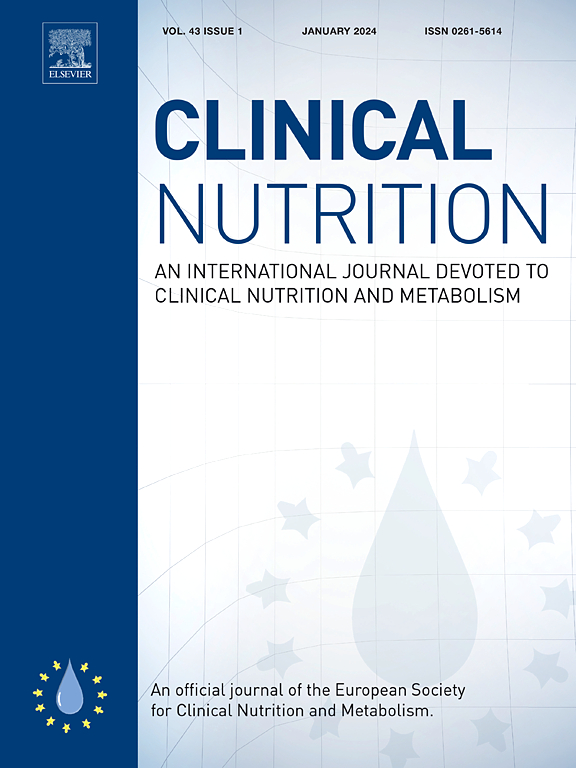Burden of cancer attributable to high body mass index: A systematic analysis of the Global Burden of Disease Study 2021
IF 6.6
2区 医学
Q1 NUTRITION & DIETETICS
引用次数: 0
Abstract
Background
High body mass index (BMI) is a well-established cancer risk factor. Reliable, updated data are essential for guiding public health policies and designing effective interventions to reduce the cancer burden associated with high BMI.
Methods
Data from the Global Burden of Disease Study 2021 on cancer burden attributable to high BMI were analysed globally, stratified by sex, age, geographic region, cancer type, and socio-demographic index (SDI). Temporal trends in age-standardized rates from 1990 to 2021 were evaluated using estimated annual percentage changes.
Results
In 2021, cancer attributable to high BMI resulted in 356.74 thousand deaths (95% uncertainty interval: 146.12–581.01) and 8.89 million (3.75–14.38) Disability-Adjusted Life Years (DALYs), with females bearing the largest burden. From 1990 to 2021, age-standardized rates of high BMI-related cancer deaths increased by 0.35% annually, while DALYs rose by 0.42% annually. In 2021, the burden of cancer deaths and DALYs attributable to high BMI varied considerably across geographical regions. Low-middle SDI regions experienced the largest increases in death and DALY rates attributable to high BMI, while these rates declined in high SDI regions. Colon and rectum cancers accounted for the greatest number of deaths and DALYs, while pancreatic cancer showed the most rapid growth in attributable burden.
Conclusions
High BMI is a major contributor to the global cancer burden, with significant variation by sex, cancer type, region, and SDI level. Targeted public health strategies are urgently needed to mitigate the growing impact of overweight and obesity on cancer.
求助全文
约1分钟内获得全文
求助全文
来源期刊

Clinical nutrition
医学-营养学
CiteScore
14.10
自引率
6.30%
发文量
356
审稿时长
28 days
期刊介绍:
Clinical Nutrition, the official journal of ESPEN, The European Society for Clinical Nutrition and Metabolism, is an international journal providing essential scientific information on nutritional and metabolic care and the relationship between nutrition and disease both in the setting of basic science and clinical practice. Published bi-monthly, each issue combines original articles and reviews providing an invaluable reference for any specialist concerned with these fields.
 求助内容:
求助内容: 应助结果提醒方式:
应助结果提醒方式:


